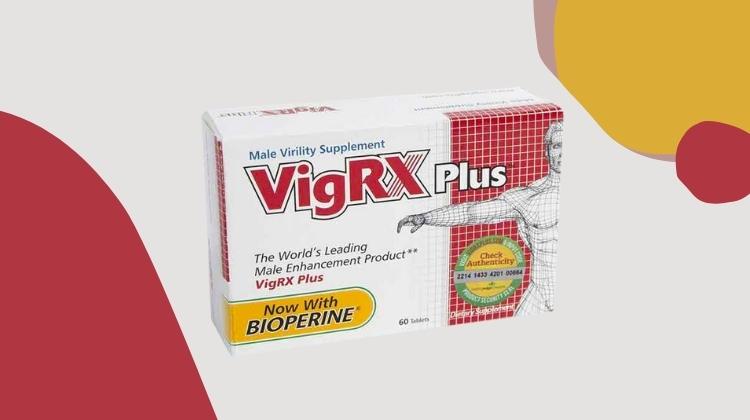Creating Effective Technical Documentation
Master the art of creating technical documentation with our guide on clarity, consistency, and tools. Learn best practices for user-friendly, accurate, and accessible docs.

Technical documentation is a critical component of software development and other technical fields. It serves as a comprehensive guide for users, developers, and stakeholders, providing essential information about a system, product, or process. Effective technical documentation ensures clarity, usability, and accuracy, which are crucial for successful implementation, maintenance, and user satisfaction. In this guide, we'll explore the key principles and best practices for creating effective technical documentation, including structure, content, and tools.
What is Technical Documentation?
Technical documentation refers to a variety of documents that explain how a product, system, or process works. It includes user guides, installation manuals, API documentation, troubleshooting guides, and more. The purpose of technical documentation is to provide clear, concise, and accurate information to help users understand and utilize a product or system effectively.
Key Principles for Effective Technical Documentation
Clarity
Clarity is paramount in technical documentation. Avoid jargon, complex language, and ambiguous terms. Use simple, straightforward language to ensure that the documentation is easily understandable by your target audience.
Consistency
Consistency in terminology, formatting, and style enhances readability and reduces confusion. Establish a style guide and adhere to it throughout the documentation. This includes consistent use of terms, fonts, headings, and code formatting.
Accuracy
Ensure that all information is accurate and up-to-date. Technical documentation should reflect the current state of the product or system. Regularly review and update documentation to incorporate new features, changes, and corrections.
Audience Understanding
Tailor the documentation to the needs and technical level of your audience. Different audiences may require varying levels of detail and explanations. For example, end-users may need simpler, step-by-step instructions, while developers might need detailed API references.
Structure and Organization
Organize the documentation logically with a clear structure. Use headings, subheadings, and a table of contents to help users navigate through the information. Group related topics together and provide a clear progression from introductory material to advanced concepts.
Visual Aids
Incorporate visual aids such as diagrams, screenshots, and flowcharts to enhance understanding. Visual elements can help explain complex concepts and provide clear examples, making the documentation more engaging and easier to follow.
Accessibility
Ensure that the documentation is accessible to all users, including those with disabilities. Use accessible formats and provide alternative text for images. Consider providing documentation in multiple languages if your audience is diverse.
Searchability
Make the documentation searchable to allow users to find specific information quickly. Implement a robust search function, use relevant keywords, and organize content in a way that supports effective searching.
Feedback and Improvement
Collect feedback from users to identify areas for improvement. Encourage users to provide input on the clarity, usability, and accuracy of the documentation. Use this feedback to make continuous improvements.
Documentation Tools
Choose appropriate tools for creating, managing, and publishing documentation. Tools should support collaboration, version control, and integration with other systems. Popular documentation tools include Markdown editors, documentation generators, and content management systems (CMS).
Best Practices for Creating Effective Technical Documentation
Define Objectives and Scope
Before starting the documentation process, clearly define the objectives and scope. Understand what information needs to be included, who the target audience is, and the purpose of the documentation.
Create a Documentation Plan
Develop a documentation plan outlining the structure, content, and timeline. Include a table of contents, a list of required sections, and a schedule for completing each section.
Write Clear and Concise Content
Focus on writing clear and concise content. Break down complex information into manageable sections, use bullet points for lists, and provide examples where necessary. Avoid unnecessary jargon and keep sentences short.
Use Standardized Terminology
Standardize terminology to avoid confusion. Define technical terms and acronyms when they are first introduced, and use them consistently throughout the documentation.
Incorporate Examples and Use Cases
Provide practical examples and use cases to illustrate concepts. Examples help users understand how to apply information in real-world scenarios and can clarify complex instructions.
Implement Review and Approval Processes
Establish review and approval processes to ensure the accuracy and quality of the documentation. Involve subject matter experts (SMEs) and stakeholders in reviewing and validating the content.
Maintain Version Control
Use version control to manage changes to the documentation. Keep track of revisions, updates, and historical versions to ensure that users have access to the most current information.
Provide Contextual Help
Include contextual help and tooltips within the documentation. This can provide users with additional information or explanations without overwhelming them with too much detail.
Ensure Mobile Compatibility
Optimize documentation for mobile devices. Users may access documentation from various devices, so ensure that it is responsive and easy to read on different screen sizes.
Promote Documentation
Make the documentation easily accessible by promoting it through appropriate channels. Provide links to the documentation within the product, on your website, and in user communications.
Common Types of Technical Documentation
User Guides
User guides provide step-by-step instructions for end-users to operate and troubleshoot a product or system. They often include screenshots, examples, and FAQs to assist users.
API Documentation
API documentation explains how to interact with an API, including endpoints, parameters, request/response formats, and authentication methods. It is essential for developers integrating with the API.
Installation Manuals
Installation manuals provide instructions for setting up and configuring a product or system. They include prerequisites, installation steps, and troubleshooting tips.
Developer Guides
Developer guides offer detailed information for developers working on the product or system. They cover topics such as architecture, code samples, and development best practices.
Troubleshooting Guides
Troubleshooting guides help users diagnose and resolve issues with a product or system. They provide common problems, error messages, and solutions to assist users in fixing issues.
System Requirements Documentation
System requirements documentation outlines the hardware and software requirements needed to run a product or system. It includes details on operating systems, memory, storage, and other dependencies.
Release Notes
Release notes provide information about new features, improvements, bug fixes, and changes in each release of a product or system. They keep users informed about updates and enhancements.
Tools for Creating Technical Documentation
Markdown Editors
Markdown editors, such as Typora and Dillinger, offer a simple way to create formatted text using Markdown syntax. They are ideal for writing and previewing documentation.
Documentation Generators
Tools like Javadoc, Doxygen, and Sphinx generate documentation from source code comments. They are useful for creating API documentation and developer guides.
Content Management Systems (CMS)
CMS platforms, such as WordPress and Confluence, provide a collaborative environment for creating and managing documentation. They support version control, permissions, and search functionality.
Graphic Design Tools
Graphic design tools, like Adobe Illustrator and Canva, help create visual aids, diagrams, and screenshots for documentation. Visual elements enhance understanding and engagement.
Screen Recording Software
Screen recording software, such as Camtasia and OBS Studio, allows for the creation of video tutorials and demonstrations. These can be embedded in documentation for a more interactive experience.
FAQ:
1. What is the purpose of technical documentation?
The purpose of technical documentation is to provide clear, accurate, and comprehensive information about a product, system, or process. It helps users understand how to use, install, and troubleshoot the product effectively.
2. How do I ensure my technical documentation is clear and understandable?
Use simple, straightforward language, avoid jargon, and structure content logically. Include visual aids and examples to clarify complex concepts and ensure that the documentation is tailored to the needs of your target audience.
3. What are some common types of technical documentation?
Common types include user guides, API documentation, installation manuals, developer guides, troubleshooting guides, system requirements documentation, and release notes.
4. How often should technical documentation be updated?
Technical documentation should be updated regularly to reflect changes in the product, system, or process. Updates should be made whenever new features are added, bugs are fixed, or significant changes occur.
5. What tools are available for creating technical documentation?
Tools for creating technical documentation include Markdown editors, documentation generators, content management systems (CMS), graphic design tools, and screen recording software.
6. How can I make my technical documentation accessible to all users?
Ensure accessibility by using readable fonts, providing alternative text for images, and following web accessibility guidelines. Consider offering documentation in multiple languages if needed.
7. What is the role of visual aids in technical documentation?
Visual aids, such as diagrams, screenshots, and flowcharts, help clarify complex information, provide examples, and enhance user understanding. They make the documentation more engaging and easier to follow.
8. How do I gather feedback on my technical documentation?
Collect feedback through surveys, user testing, and direct input from users and stakeholders. Use this feedback to identify areas for improvement and make necessary updates.
9. What is version control in technical documentation?
Version control involves managing changes to documentation by tracking revisions, updates, and historical versions. It ensures that users have access to the most current information and allows for rollback if needed.
10. How can I promote my technical documentation?
Promote documentation by providing easy access through your website, within the product, and in user communications. Use links, announcements, and notifications to ensure users are aware of and can access the documentation.
Get in Touch
Website – https://www.webinfomatrix.com
Mobile - +91 9212306116
Whatsapp – https://call.whatsapp.com/voice/9rqVJyqSNMhpdFkKPZGYKj
Skype – shalabh.mishra
Telegram – shalabhmishra
Email - info@webinfomatrix.com
What's Your Reaction?



















.jpg)